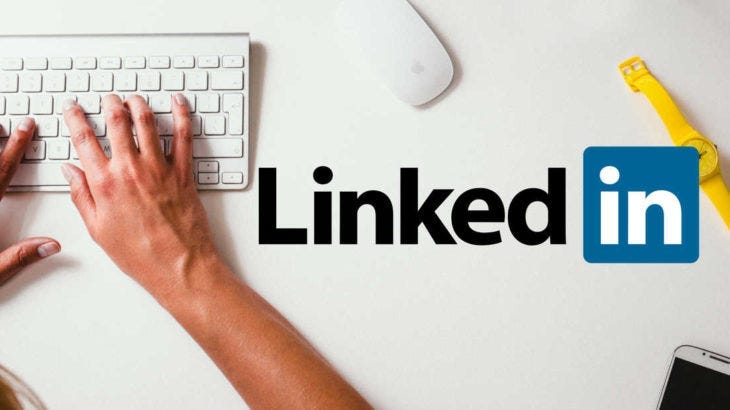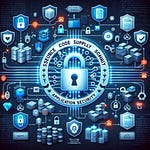Section 1: Understand the Risks
As a cybersecurity professional, you understand the importance of protecting sensitive information. However, it’s essential to understand the specific risks associated with LinkedIn. For example, hackers often use LinkedIn to gather information for social engineering attacks. Be aware of the risks and take steps to mitigate them.
One way to do this is to limit your personal information on LinkedIn. Don’t include sensitive details like your home address or phone number. Also, be cautious about what you post in your profile or status updates. Avoid sharing information that could be used to guess your security questions, like your mother’s maiden name or your first pet’s name.
Finally, be aware of phishing scams. Hackers may send you messages on LinkedIn that look legitimate but contain malware or links to fake login pages. Double-check the sender’s email address and verify any links before clicking on them.
Section 2: Secure Your Account
The first step to securing your LinkedIn account is to enable two-factor authentication (2FA). This adds an extra layer of security by requiring a code and your password to log in. LinkedIn offers several 2FA options, including SMS messages, phone calls, and authentication apps like Google Authenticator.
It would be best if you also chose a strong, unique password for your LinkedIn account. Avoid using the same password for multiple accounts, and use a combination of letters, numbers, and symbols to make your password more secure.
Finally, keep your account up-to-date by regularly reviewing your security settings and checking for suspicious activity.
Section 3: Be Mindful of Your Connections
LinkedIn is designed to help you connect with other professionals, but it’s essential to be mindful of who you connect with. Before accepting a connection request, please take a few minutes to review the person’s profile and confirm that they are who they say they are.
Additionally, be cautious about accepting requests from people you don’t know. Hackers often use fake LinkedIn profiles to gather information or spread malware. If you’re unsure about a connection request, it’s better to err on caution and decline it.
Finally, be careful about what you share with your connections. Don’t post sensitive information or business secrets; be cautious about sharing personal details like your home address or phone number.
Section 4: Keep Your Profile Secure
Your LinkedIn profile is a valuable source of information for hackers, so it’s essential to keep it secure. One way to do this is to limit the information you share. For example, think about when you might share or add to your entire work history or include your phone number.
Be cautious about what you post on your profile. Avoid sharing information that could be used to guess your security questions, like your mother’s maiden name or your first pet’s name.
Finally, you can set your profile to private if you’re not actively looking for a job. This will prevent recruiters and others from seeing your profile and potentially using your information for phishing scams or other attacks.
Section 5: Monitor Your Activity
Monitoring your LinkedIn activity regularly is essential to ensure your account hasn’t been compromised. Check your login history and review any changes to your profile or connections.
If you notice any suspicious activity, such as logins from unfamiliar locations or changes to your profile that you didn’t make, take immediate action. Change your password, review your security settings, and contact LinkedIn support if necessary.
Additionally, be on the lookout for phishing scams or other suspicious messages. If you receive a message that seems too good to be accurate or asks for sensitive information, it’s likely a scam.
Section 6: Use LinkedIn Safely on Public Wi-Fi
Public Wi-Fi networks often need to be more secure, which means that hackers can easily intercept your data if you’re not careful. To stay safe using LinkedIn on public Wi-Fi, ensure you use a secure connection. Consider using a virtual private network (VPN) to encrypt your data and protect your privacy.
Additionally, be cautious about using public computers to access LinkedIn. Use your device and make sure it’s secure before logging in.
Finally, be mindful of who is watching you when using LinkedIn in public. Don’t type in sensitive information if people nearby could see your screen.
Section 7: Keep Your LinkedIn App Up-to-Date
If you use the LinkedIn app on your smartphone or tablet, it’s essential to keep it up-to-date. App updates often include security patches that can help protect your data and prevent attacks.
Additionally, be cautious about downloading apps from third-party sources. Stick to official app stores like the Apple App Store or Google Play Store to reduce the risk of downloading malware or other malicious apps.
Finally, be careful about the permissions you grant to apps on your device. Don’t grant unnecessary permissions, and be cautious about giving access to your contacts or other sensitive information.
Section 8: Use LinkedIn Learning Safely
LinkedIn Learning is a valuable resource for cybersecurity professionals, but it’s essential to use it safely. Be cautious when downloading course materials or other files: Ensure you’re downloading files from trusted sources and scan them for viruses or malware before opening them.
Section 9: Protect Your Company’s Information
If you’re a cybersecurity professional working for a company, protecting your company’s information on LinkedIn is essential. Ensure your employees know the risks associated with LinkedIn and train them on best practices for using the platform safely.
Additionally, consider setting up a company page on LinkedIn to control the information shared about your company. Review your employees’ profiles to ensure they’re not sharing sensitive information, and monitor your company’s activity on the platform regularly.
Finally, be cautious about sharing information about your company’s products or services on LinkedIn. Don’t post sensitive information or business secrets, and be careful about sharing personal details like your home address or phone number.
Section 10: Be Prepared for a Data Breach
Even if you take all the necessary precautions, there’s always a risk of a data breach. Be prepared by having a plan in place for responding to a violation.
Make sure you know who to contact in the event of a breach, and have a plan for notifying affected individuals and authorities if necessary. Consider working with a cybersecurity firm to help you respond to breaking and minimize the damage.
Finally, review your insurance policies to ensure adequate coverage in a breach. Cyber insurance can help cover the costs associated with a breach, including legal fees, notification costs, and damage to your reputation.
Summing it all up
In conclusion, LinkedIn can be a valuable resource for professionals, but it’s also important to be mindful of the security risks associated with the platform. By following these top 10 security tips, including understanding the risks, securing your account, being aware of your connections, keeping your profile secure, monitoring your activity, using LinkedIn safely on public Wi-Fi, keeping your LinkedIn app up-to-date, using LinkedIn Learning safely, and protecting your company’s information, you can stay ahead of the cybersecurity game and help ensure that your personal and professional information remains secure. By taking these simple precautions, you can enjoy all the benefits of LinkedIn without putting yourself or your company at risk of cyberattacks.
















The Top 10 LinkedIn Security Tips: Leaderboards are no longer just in the office